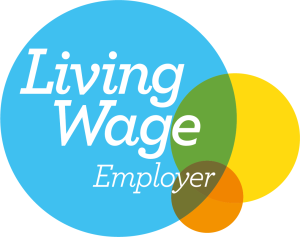It is now officially November 2022. Exactly 966 days, or over two and a half years since the UK first went into a national lockdown.
During this time, we’ve witnessed a global pandemic and various national lockdowns. We’ve been locked in our homes, let out, and then locked back in. Pubs became outdoor venues; clubs were forced to close. We were limited to groups of 6, completed track and trace to gain entry to restaurants and hand sanitiser sales went through the roof. There was a time we were only allowed out for an hour of exercise and a time we were incentivised to ‘eat out to help out’. We’ve gone from closed borders to passenger locators, to restriction-free travel. In this time, we’ve seen an outbreak of war, a cost-of-living crisis and Great Britain lost its longest-reigning monarch. We saw three prime ministers in three months and had the hottest day to date in the UK. If you’re still following the whirlwind of events that have unravelled over the past two years, you’ll have noticed that we are living in a world of uncertainty, a world where nothing is promised and nothing is permanent. And I think if there’s a lesson to be learnt from the past 966 days, it’s that planning ahead will certainly reap the reward.
“But how do I plan for the unknown?”, I hear you ask. Well… it’s not so much about preparing for one particular outcome, it’s about having solutions in place that will be effective in all eventualities. In the event world, despite the huge shift to virtual events that we saw in 2020, many of our clients decided to go back to live events as soon as legally possible. And we get it. We equally loved to be back doing what we do best, and with a live audience to share it all with. The question is, though, how can we continue to plan effective events in a time of cut budgets, low disposable income and rising costs? It’s simple, perhaps it’s time to consider virtual again. Perhaps what so many of us thought we had left behind, may indeed become the future.
With all of the above considered, planning a virtual or hybrid event might just be the best thing you could do for your business in 2022 and beyond. Delivering business updates, engaging colleagues, celebrating, rewarding, and enhancing the colleague experience are all crucial in increasing employee motivation and retaining staff. So, when times are tough financially – you don’t necessarily need to start crossing out the dates pencilled into your 2023 event calendar. You may just need to consider alternate, more cost-effective ways to bring your vision to reality.
Rewind to spring 2020, and virtual events were so successful that they helped our clients to maximise audience, visibility, and attendance, without the usual cost. Not only this, but virtual events can offer safe and comfortable experiences to anyone who still might not be entirely comfortable in large, crowded places. With virtual events, your audience can watch your event unlimited times and the shorter, more concise nature of the day perhaps means that your messages will hit home harder. Finally, (and not to save the best ’til last), they can also help you to save your hard-earned cash. I imagine that’s music to anyone’s ears now that we have to keep the heating off to afford the petrol premium. Connect In has delivered over 30 virtual events and, increasingly, we are seeing our clients revert to the world of virtual to keep their staff connected with less of the attached financial strain!
- Venue
When you host a live event, the first cost you entail is the cost of hiring a venue to hold your audience. This can be a sting and take a big cut of your budget before you’ve even considered anything else, specifically for those larger-scale events that require a larger event space for their audience.
- Catering
Hosting in-person events, more often than not, will mean that you need to provide food and drink for your audience. Keeping attendees fuelled up on flat whites and bacon barms can be more expensive than you’d think!
- Event build & de-rig
Live events often require days of event build and venue dressing. With a virtual event, you’ll have no prop hire fees, no venue dressing fees and, most importantly, no heavy lifting or backache.
- Speakers
Having your speakers present remotely means that you can secure a wider choice of speakers as you’ll have fewer budget and travel constraints. It also makes securing the best speakers (who are most likely the busiest) much easier. If you have a one-hour time slot for a speaker, you only need an hour of their busy schedule. However, with a live event, you may need them to block out a couple of days once travel, and accommodation is factored in.
- Travel
It’s not just the travel of your speakers that needs to be considered in live events, though. Consider the travel requirements and fuel costs of your team, suppliers, attendees, caterers, entertainment, and anyone else involved in your event. This could amount to thousands of pounds alone.
So, it’s clear that virtual events can certainly save you money. But as I mentioned, none of us can be certain as to what the climate may be like in a year, (I think we can all agree, we learnt that the hard way!) We’re not saying that in-person events should be wiped out. Far from it. But there are ways that you can better optimise your company’s annual event budget. Throw an in-person summer party and host your annual awards virtually, for example. The flexibility and financial benefit of virtual events may just give you the security and cost-efficiency you need in 2023 and beyond. After all, who knows what might be around the corner?




